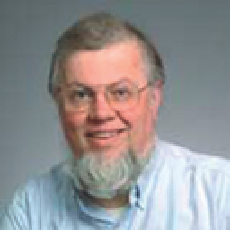Information Technology Reference
In-Depth Information
The key ideas of modern engineering - modularity, modeling, hierarchical
design, isolation of concerns, abstraction, reusable parts, defined interfaces,
design rules, flexibility - promise to be just as applicable to biological systems
as they are to computers or aircraft.…
But the real challenge is learning to engineer with unique characteristics
of biological systems: their self-reproducing capability, their evolutionary
capacity to adapt, and their remarkable robustness in the face of damage and
imperfect or failing components. These organizational engineering principles
will play an important role not just in engineering biological systems, but in
engineering in our existing disciplines.
18
B.15.14. Randy Rettberg studied
electrical engineering and comput-
ing. In the 1990s as a major career
change, he decided to quit his job
with Sun Microsystems and apply his
engineering knowledge to molecular
biology. Rettberg is president of the
International Genetically Engineered
Machine Foundation. The organiza-
tion runs a global competition for
undergraduates and high school
students in designing brand new
biological parts for “genetically
engineered machines.”
One key goal of synthetic biology is to produce a catalog of standard biological
devices that biological engineers can put together to design new life systems.
We will look at another avenue of research based on DNA sequences.
Engineering with DNA is an extreme example of molecular nanotechnol-
ogy. Humans have about one hundred trillion cells, and most human cells are
between one and one hundred micrometers in diameter. Each cell contains a
nucleus, where most of our genetic material is stored as DNA. Inside the nucleus,
the DNA is organized in linear molecules called
chromosomes
. The genetic infor-
mation in DNA is stored as a code consisting of four nitrogen-containing com-
pounds called
bases
: adenine (A), guanine (G), cytosine (C), and thymine (T).
Sequences of these bases determine the genetic instructions for maintaining
and replicating cells. Because every base must be one of these four types, each
base encodes two bits of information. There about 3.5 billion bases in human
DNA, so the entire human genome, a complete set of all our genetic instructions,
corresponds to about seven billion bits of information or less than a gigabyte to
store the whole human genetic code. The bases pair up in a specific way with
each other - A with T and C with G - to form what are known as
base pairs
. The
DNA molecule is shaped like a twisted ladder, a structure called a double helix.
Each rung of the ladder consists of a base pair. The base pairs are attached to the
sides of the ladder, which consist of sugar and phosphate molecules (
Fig. 15.21
).
This is the famous double helix of Francis Crick and James Watson.
An important property of DNA is that it can be exactly copied so that the
cell can divide into two new cells, each with an exact copy of the original DNA.
The fundamental unit of heredity for individuals is a gene, a sequence of DNA
that provides instructions for making a specific protein. These gene sequences
range from a few hundred to more than two million base pairs in length, and
B.15.15. Tom Knight studied electrical engineering at MIT and worked on the ARPANET in the
1960s and 1970s. He was a graduate student in the Artificial Intelligence Lab at MIT and received
a doctorate in integrated circuit design in 1983. In the 1990s he became interested in biology
and started working with simple bacteria called mycoplasmas. By modifying the DNA, Knight
managed to assemble a synthetic bacterial cell. From his research he developed the concept
of BioBricks - standard sections of DNA that can be joined together in different ways to create
organisms that can perform some specific functions. There are now more than ten thousand
parts in the BioBricks registry.



Search WWH ::

Custom Search